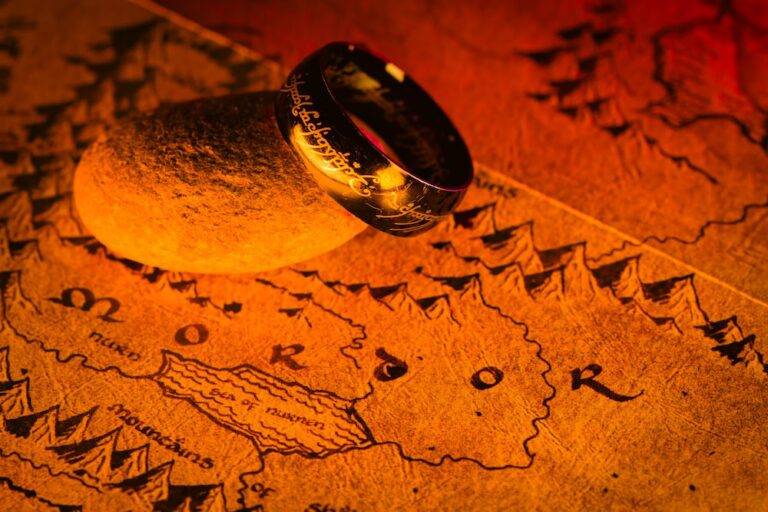Viking rings, with their intricate designs and cultural significance, offer a captivating glimpse into the history of the Viking Age. These rings, often crafted from precious metals and adorned with intricate motifs, are not only exquisite pieces of jewelry but also artifacts that provide insights into the evolving tastes, craftsmanship, and societal changes of the Viking people. In this blog, we embark on a journey through time, exploring the evolution of Viking ring styles across different historical periods. From the early Age to later periods influenced by external cultures, the story of Viking rings is one of adaptation and artistic innovation.
Early Viking Age (8th-10th Century)
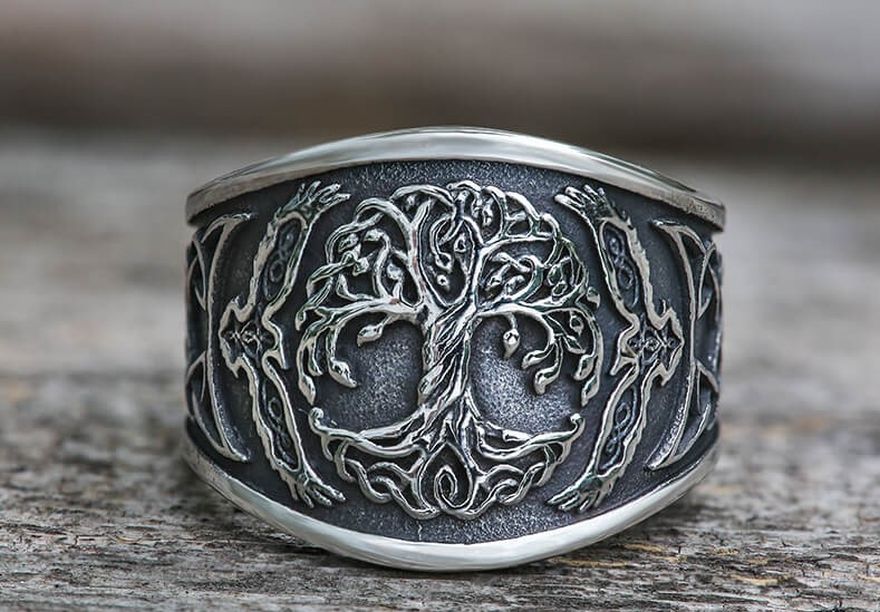
The Viking Age, which spanned from the late 8th century to the early 10th century, marked a time of great exploration and expansion for the Norse seafarers. During this period, the rings predominantly bore the influence of their Scandinavian origins and the distinct craftsmanship of the era. They were primarily utilitarian in nature, serving both as a form of currency and a symbol of social standing.
Elegance in Simplicity
Viking rings from this period were typically crafted from silver or gold, reflecting the availability of these metals in Scandinavian regions.
The bands were often wide and substantial, exhibiting a certain elegance in their simplicity.
Intricate Knotwork
While the early Viking Age rings were relatively modest in design, some artisans began incorporating the beginnings of intricate knotwork patterns.
These knotwork designs were sometimes combined with small, discreet runes. Moreover, these early knotwork motifs laid the foundation for the more elaborate designs that would emerge in later periods.
The Viking Age at its Height (10th-11th Century)
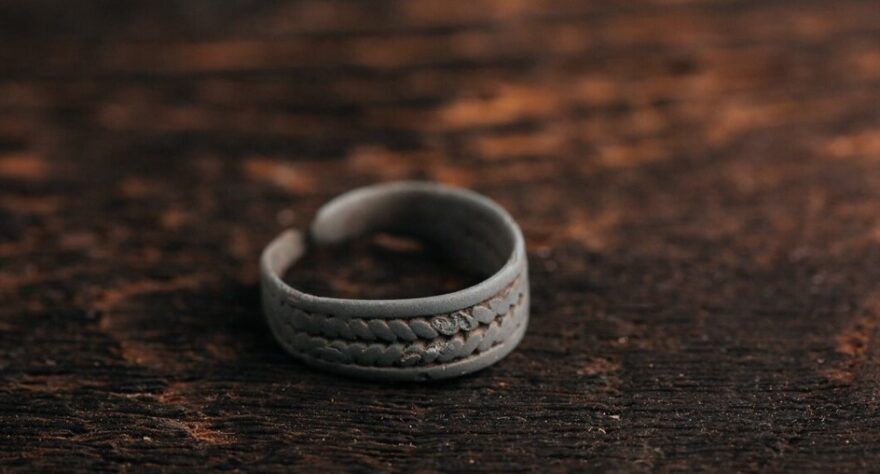
As the Viking Age progressed, so did the complexity and diversity of their ring designs. The 10th and 11th centuries marked the zenith of Viking expansion, with trade networks extending as far as the Byzantine Empire and the Middle East. This era saw a flourishing of artistic expression in Viking craftsmanship.
Influence of External Cultures
Viking raids and trading routes introduced them to various cultures, including Celtic, Byzantine, and Islamic.
Viking rings began to incorporate elements like filigree work, gemstones, and intricate patterns influenced by these external cultures. Filigree involved the intricate weaving of fine metal wires to create delicate patterns, resulting in rings of breathtaking intricacy.
Elaborate Filigree and Gemstones
Rings from this period often featured delicate filigree work, where fine wires of precious metal were twisted and soldered into intricate patterns.
Viking artisans now began to incorporate gemstones, such as garnets and colored glass, into their ring designs. Rings became veritable works of art, with filigree and gemstones adorning the bands, adding a touch of luxury and opulence.
The Late Viking Age (11th Century)
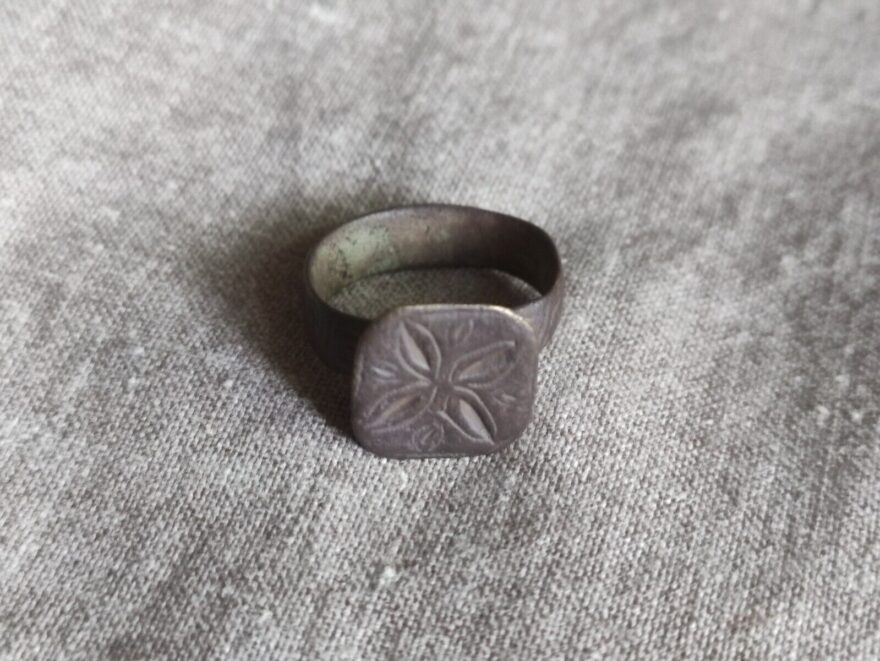
As the Viking Age drew to a close, the cultural and religious landscape of Scandinavia began to shift. The late Viking Age was marked by increased contact with Christian Europe and a gradual shift towards Christianity among the Norse people. This period saw a fusion of Viking and Christian styles.
Christian Influence
Rings from this period began to reflect the growing influence of Christianity. Designs now featured Christian symbols like crosses and depictions of saints, reflecting the conversion of many Vikings to Christianity.
Latin inscriptions gradually replaced traditional runic inscriptions, reflecting the adoption of the Latin alphabet.
Post-Viking Age and the Influence of Norman Styles (12th Century Onwards)
With the Viking Age coming to a close, the Nordic regions underwent significant cultural and political changes. The arrival of the Normans and the spread of Christianity brought further stylistic shifts.
Norman-Inspired Designs
Viking territories that fell under Norman rule experienced a blending of Viking and Norman artistic styles. Rings from this period often showcased more intricate engravings and bezel-set gemstones.
The Normans, known for their fine metalwork and gem-setting techniques, influenced Viking jewelry with their ornate and detailed designs.
Continued Use of Viking Motifs
Despite the evolving styles, Viking motifs remained prevalent in post-Viking Age rings. Dragons, serpents, and other traditional Viking symbols continued to feature prominently in the designs.
Additionally, other traditional Viking symbols like runes, Thor’s hammer (Mjölnir), and knotwork patterns maintained their prominence. These elements carried layers of meaning related to protection, strength, and spiritual connection, making them enduring choices for adornment.
Conclusion
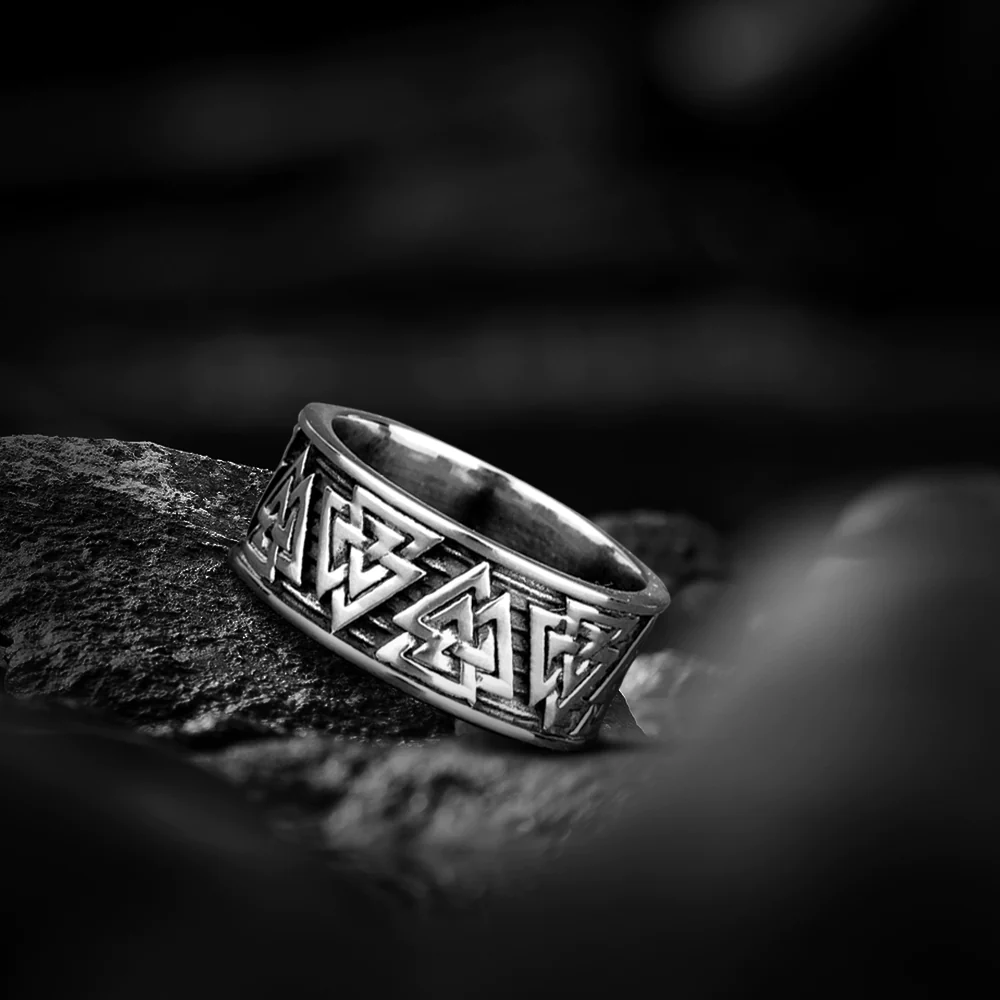
The evolution of Viking ring styles through different historical periods is a testament to the adaptability and creativity of the Viking people. From the simplicity of the early Viking Age to the complexity of the late Viking Age and beyond, these rings offer a fascinating window into the cultural, technological, and societal changes that shaped Viking civilization. While external influences played a role in altering Viking ring designs, their distinct motifs and craftsmanship continued to endure. Today, these rings not only serve as exquisite pieces of jewelry but also as reminders of a rich and dynamic history that continues to captivate our imagination.
FAQs:
1. What Were the Most Common Materials Used in Crafting Viking Rings?
Viking rings were primarily crafted from metals like silver, gold, and bronze. These materials were abundant in Scandinavia and allowed for intricate craftsmanship.
2. Were Viking Rings Only Worn by Men, or Were They Unisex?
Viking rings were worn by both men and women. While some designs may have been more gender-neutral, others were tailored to suit individual preferences.
3. Did Viking Rings Have Specific Symbols or Motifs with Meaning?
Yes, Viking rings often featured symbolic engravings and motifs. These could include runes, knotwork, animals, and other culturally significant symbols. These designs often held personal or cultural meaning for the wearer.
4. How Did Viking Rings Serve Practical Purposes Beyond Ornamentation?
Viking rings were versatile accessories. They were used as currency, worn as status symbols, and sometimes believed to possess protective properties. Additionally, they could be inscribed with personal messages or markings.
5. Can Modern Artisans Replicate Authentic Viking Ring Styles?
Yes, many modern jewelers and artisans specialize in crafting Viking-inspired jewelry. They draw from historical designs and techniques, offering enthusiasts the opportunity to own pieces reminiscent of authentic Viking rings.
Related Posts:
- 10 Best External Hard Drive 2024 - Compatible With…
- 20 Best Gaming Headset Under 50$ 2024 - for PC, PS4,…
- 3 Tips for Understanding the Symbolism of Gothic Jewelry
- Caribbean Artistry Unveiled Exploring the Vibrant…
- Why Is Custom Jewellery Getting More Popular?
- 10 Best External SSD For Gaming 2024 - PC, PS5 & Xbox Gaming

